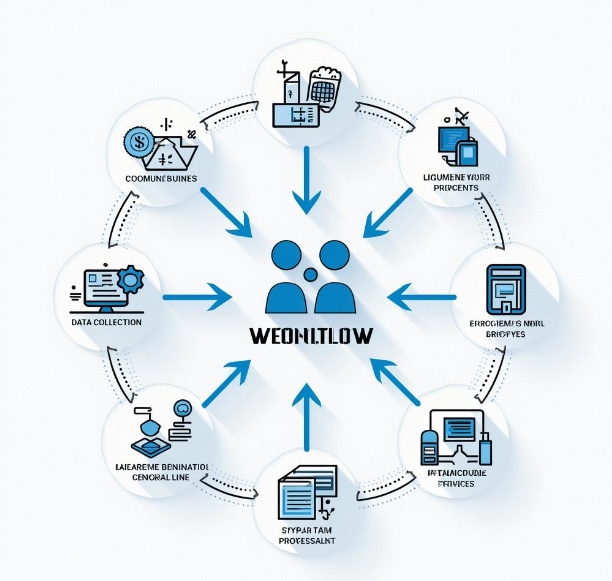Machine Learning Development and Application: The Technological Driving Force of Intelligent Transformation
- latest articles
- 1.DApp Development & Customization: Merging Diverse Market Needs with User Experience 2.Analysis of the Core Technical System in DApp Project Development 3.How to achieve cross-chain interoperability in Web3 projects? 4.How does the tokenization of points reconstruct the e-commerce ecosystem? 5.How to Set and Track Data Metrics for a Points Mall? 6.What is DApp Development? Core Concepts and Technical Analysis 7.Inventory of commonly used Web3 development tools and usage tips 8.Development of a Distribution System Integrated with Social E-commerce 9.Six Key Steps for Businesses to Build a Points Mall System 10.What is DApp Development? A Comprehensive Guide from Concept to Implementation
- Popular Articles
- 1.Future Trends and Technology Predictions for APP Development in 2025 2.Analysis of the DeFi Ecosystem: How Developers Can Participate in Decentralized Finance Innovation 3.From Zero to One: How PI Mall Revolutionizes the Traditional E-commerce Model 4.DAPP Development | Best Practices for Professional Customization and Rapid Launch 5.Recommended by the Web3 developer community: the most noteworthy forums and resources 6.From Cloud Computing to Computing Power Leasing: Building a Flexible and Scalable Computing Resource Platform 7.How to Develop a Successful Douyin Mini Program: Technical Architecture and Best Practices 8.Shared Bike System APP: The Convenient Choice in the Era of Smart Travel 9.How to Create a Successful Dating App: From Needs Analysis to User Experience Design 10.From Design to Development: The Complete Process of Bringing an APP Idea to Life
In the information age, machine learning (ML) has become one of the key technologies driving the intelligent transformation across various industries. From internet companies to manufacturing, from healthcare to finance, the applications of machine learning are ubiquitous. With the rapid development of big data and enhanced computational capabilities, machine learning has not only broken through the limitations of traditional technologies but also provided enterprises with new development opportunities. This article will explore the important role of machine learning in intelligent transformation, analyze the latest advancements in its development and application, and look into future trends.
1. What is Machine Learning?
Machine learning is a data-driven technology that uses algorithms to enable computer systems to learn from large amounts of data and make decisions. It does not rely on explicit programming but instead uses pattern recognition and self-improvement mechanisms to "train" models, thereby enhancing the accuracy of predictions and decisions. Machine learning can be categorized into several types, including supervised learning, unsupervised learning, semi-supervised learning, and reinforcement learning, with various algorithms and methods selected based on the requirements of the actual problem.
The core of machine learning lies in data and models. Data provides the necessary training material for machine learning, while models are tools that process and analyze data through algorithms. With the advancement of artificial intelligence technology, machine learning not only holds a significant position in scientific research and technical fields but is also gradually permeating various aspects of daily life.
2. The Important Role of Machine Learning in Intelligent Transformation
2.1 Precise Decision-Making
The core of intelligent transformation lies in the ability to make precise decisions, and machine learning is a key driver in this process. Through machine learning, enterprises can extract valuable information from massive datasets, enabling more accurate market predictions, product planning, and strategic decisions.
For example, in the retail industry, by analyzing consumers' purchase history, browsing behavior, and social media interactions, merchants can accurately predict users' purchasing needs and provide personalized recommendations. This not only enhances customer satisfaction but also significantly increases sales conversion rates.
2.2 Automated Processes
The application of machine learning technology has automated many traditional manual operations, saving substantial labor costs and improving work efficiency. In manufacturing, machine learning can be used to predict equipment failures and perform maintenance automatically, thereby reducing downtime and ensuring smooth production processes.
Taking smart production as an example, machine learning can monitor data on the production line (such as temperature, humidity, vibration, etc.) and adjust production parameters in real-time to maximize production efficiency and product quality. This intelligent production method reduces the need for human intervention, minimizes human errors, and promotes the upgrade of production automation.
2.3 Personalized Services
The powerful computational capabilities of machine learning enable it to perform personalized analysis on massive datasets, helping businesses provide tailored services to customers. In the financial industry, machine learning is widely used in areas such as risk assessment, credit scoring, and fraud detection. By analyzing users' historical transaction data and behavioral patterns, machine learning can predict customers' credit risks and provide banks or financial institutions with more accurate loan approval solutions.
In the healthcare sector, machine learning technology can help doctors develop personalized treatment plans by analyzing patients' health records, genetic information, and lifestyle habits. Additionally, machine learning can be used for early disease detection, such as identifying potential cancerous lesions by analyzing imaging data, enabling early detection and treatment.
3. Key Technologies in Machine Learning Development and Application
3.1 Data Processing and Feature Engineering
Data is the foundation of machine learning, and the quality of data directly affects the performance of models. Data collection, cleaning, processing, and feature engineering are crucial steps in the machine learning development process. In practical applications, data often contains noise, missing values, and inconsistencies, so effectively cleaning and processing data is key to developing efficient machine learning models.
Feature engineering involves extracting features from raw data that are beneficial for model training. Good features can significantly improve the accuracy and generalization ability of models. By using appropriate techniques (such as standardization, normalization, principal component analysis, etc.), developers can transform complex data into more usable forms, thereby enhancing the effectiveness of machine learning algorithms.
3.2 Model Selection and Training
The choice of a machine learning model depends on the specific application scenario and data characteristics. Common machine learning algorithms include linear regression, decision trees, support vector machines (SVM), random forests, neural networks, etc. Each algorithm has its unique advantages and disadvantages, so selecting the appropriate algorithm is crucial during development.
During the model training process, developers typically need to use large amounts of labeled data for training, adjusting model parameters and optimizing algorithms to better fit the data. Techniques such as cross-validation and grid search can help developers find the best model hyperparameters, improving the predictive performance of the model.
3.3 Model Evaluation and Optimization
After model training is completed, evaluating the model's performance is an important step. Common evaluation metrics include accuracy, recall, F1-score, AUC, etc., and different application scenarios may require different evaluation metrics. Developers need to choose appropriate evaluation methods based on actual needs and further optimize the model based on the evaluation results.
Model optimization can be achieved in various ways, such as adjusting algorithm hyperparameters, increasing training data, or selecting more suitable features. Additionally, ensemble learning methods (such as random forests, XGBoost, etc.) can further improve the overall model's accuracy and stability by combining multiple weak models.
3.4 Deployment and Monitoring
Model development is only one part of machine learning applications; deploying the model into a real-world environment and monitoring and maintaining it are also important aspects of the development process. In practical applications, machine learning models may encounter issues such as changes in data distribution or external environmental interference, so regular monitoring and updates are necessary.
Model deployment typically involves applying the trained model to a production environment and providing real-time prediction services. For example, in e-commerce platforms, recommendation systems need to provide personalized recommendations in real-time based on user behavior and product data. To ensure the accuracy of recommendations, the system requires continuous model updates and adjustments.

4. Future Development Trends
4.1 Widespread Application of Deep Learning
Deep learning is an important branch of machine learning. In recent years, with the improvement in computational capabilities and the accumulation of big data, deep learning has been widely applied, especially in fields such as image recognition, natural language processing, and speech recognition. In the future, deep learning will demonstrate significant potential in more industries, driving the process of intelligent transformation.
4.2 Federated Learning and Privacy Protection
As data privacy issues become increasingly severe, how to conduct data analysis and model training while protecting personal privacy has become an urgent problem to solve. Federated Learning, as an emerging machine learning approach, processes data on user devices, avoiding the need to centralize data on servers, thereby effectively protecting user privacy.
4.3 Reinforcement Learning and Adaptive Systems
Reinforcement learning is a technology based on reward mechanisms for learning, which has made significant progress in fields such as autonomous driving and robotics in recent years. Reinforcement learning not only enables autonomous decision-making in complex environments but also continuously optimizes decision-making strategies through interaction and feedback. With further technological advancements, reinforcement learning will drive the emergence of more intelligent adaptive systems.
5. Summary
As a technological driver of intelligent transformation, machine learning is profoundly influencing the production methods and service models of various industries. Through precise decision-making, automated processes, and personalized services, machine learning has brought unprecedented efficiency improvements and market competitiveness to enterprises. With the continuous development of technology, machine learning will play an even more important role in the future, providing a more solid foundation for the intelligent transformation of various industries.
In this process, enterprises must not only focus on the research and development of the technology itself but also consider aspects such as data collection and management, model optimization, and maintenance. In the future, with the development of emerging technologies such as deep learning, federated learning, and reinforcement learning, the application scenarios of machine learning will become even broader, bringing about more profound changes and impacts.
-

How does artificial intelligence technology transform the operational models of modern enterprises?
In the wave of the digital era, artificial intelligence (AI) technology has tran···
-

How to Utilize Artificial Intelligence for Precision Medicine and Health Management
With the rapid advancement of technology, artificial intelligence (AI) has demon···
-

Integration and Application of Artificial Intelligence and Robotics
In today's era of rapid technological advancement, the integration of artificial···

 Blockchain
Blockchain











